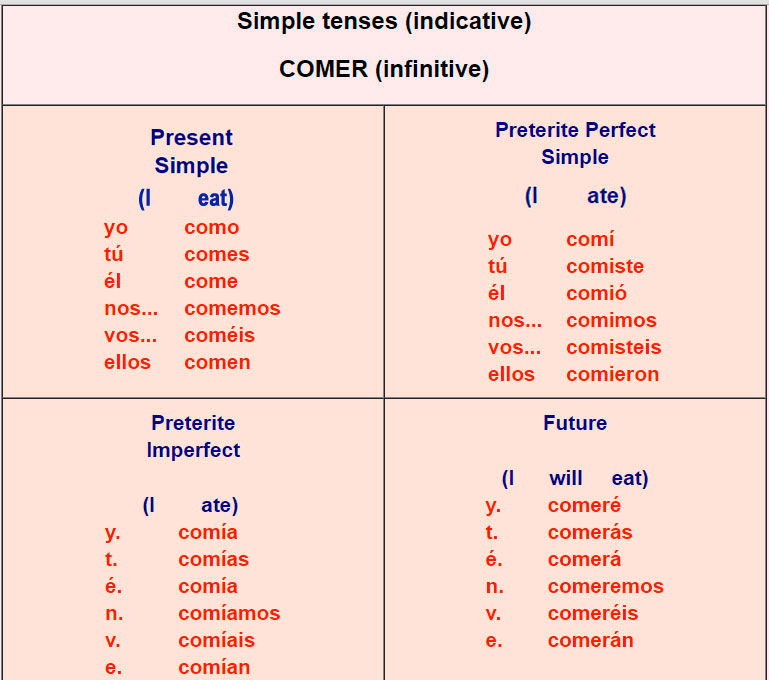

The ending depends on who is performing the action.īelow you will find the conjugations of the verb comer using the future tense: Pronoun Then attach the ending to the end of the infinitive.Find the infinitive of the verb (verbs that have not been conjugated and end in -ar, -er, -ir).To conjugate comer in the future, follow these two rules: The verb comer is what we call an -er verb. The verb comer is in its purest form (it has not been conjugated) it’s in the infinitive. To form the future tense of regular -ar, -er and -ir verbs add the following endings to the verb in the infinitive (verbs that have not been conjugated and end in -ar, -er, -ir). The verb comer is regular in the future tense. The future is used to talk about an action or event that will happen in the future. They used to eat, you (plural) used to eatīelow are some expressions that are often used when using the Imperfect: a menudo He/she used to eat, you (formal) used to eat
#Comer preterite endings how to#
To review how to conjugate -er verbs in the imperfect watch my video: Click for Videoīelow you will find the conjugations of the verb comer in the imperfect tense: Pronoun The verb comer is regular in the imperfect tense. The imperfect is used when actions don’t have a specific beginning or end. It can also be used to talk about what someone or something was like in the past, what someone used to be or used to do. It is primarily used to talk about continuous, repeaten, usual or habitual actions in the past.

To review -er verbs watch my -er verbs video: Preterite tense er & ir Verbs Spanish- Spanish Past Tense (2020)īelow you will find the conjugations of the verb comer in the preterite tense: Pronounīelow are some expressions that are often used when using the preterite: la semana pasada That means it does follow the pattern of regular -ir verbs in the preterite. The verb comer is Regular in the preterite. The preterite is NOT used to describe people in the past.That means that those actions do not have a clear beginning or end. The preterite is NOT used to describe actions or events that are repeaten or continuous in the past.The preterite tense is often used with phrases that give a specific time frame. These actions have a clear beginning or ending. The preterite is used to talk about actions that have already been completed. Just in case you need to review conjugation of -er and -ir verbs, Click for Page:īelow you will find the conjugations of the verb comer in the indicative present tense: Pronoun To review -er verbs watch my -er verbs video: Replace with a new ending depending on who performs the action.Regular -er verbs are conjugated by following 2 major rules. The verb comer is regular in the present tense. The present tense is used to talk about actions or events happening now. comer as an Imperative Negative Command.comer as an Imperative Affirmative Command.comer in the Subjunctive Past Perfect Tense (Pluscuamperfecto del Subjuntivo).comer in the Subjunctive Present Perfect Tense.comer in the Subjunctive Imperfect Tense.comer in the Past Perfect Tense (Pretérito Pluscuamperfecto).comer in the Present Progressive Tense.Let’s eat how to conjugate the verb comer so you can use it comfortably in all tenses. That means this verb does follow the traditional conjugation patterns in all verb tenses.


 0 kommentar(er)
0 kommentar(er)
